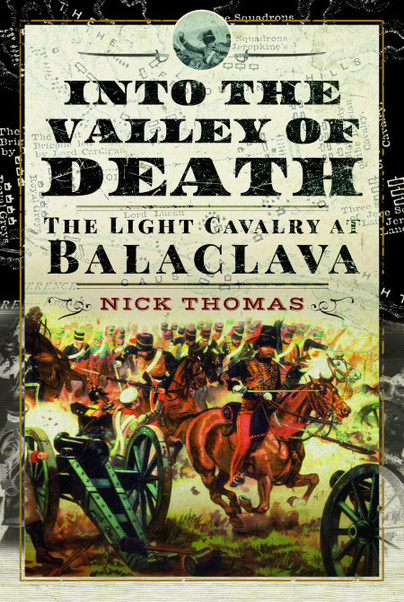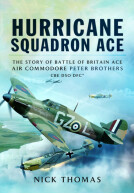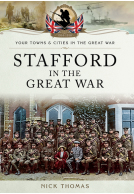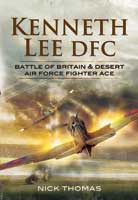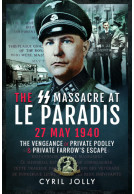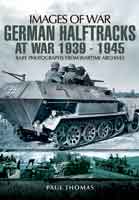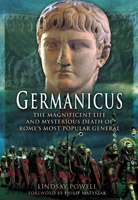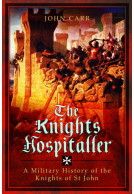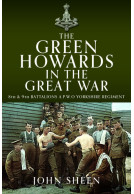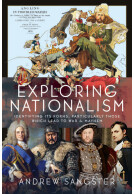Into the Valley of Death (Hardback)
The Light Cavalry at Balaclava
Imprint: Pen & Sword Military
Pages: 368
Illustrations: 16 black and white
ISBN: 9781526722928
Published: 13th May 2021
(click here for international delivery rates)
Order within the next 3 hours, 3 minutes to get your order processed the next working day!
Need a currency converter? Check XE.com for live rates
| Other formats available - Buy the Hardback and get the eBook for £1.99! | Price |
|---|---|
| Into the Valley of Death eBook (15.9 MB) Add to Basket | £6.99 |
Into the Valley of Death tells the thrilling story of the Charge of the Light Brigade in the words of the men who fought during the most heroic and yet futile engagement of the modern era.
By drawing on key evidence the author has not only provided a clear narrative of the events leading up to the 25th October 1854, but has painted a vivid picture of the Charge itself. No punches are pulled and the carnage which ensued is clear for all to read, dispelling the romantic myth of ‘death or glory’ fostered by the Victorians.
This work tells the blood and guts story of a desperate charge by 673 men in the face of what seemed insurmountable odds. It reveals the trauma endured by the rank and file who witnessed all around them men and horses cut to pieces while endeavoring to ride through walls of flying iron and lead, and not knowing if the next second would be their last.
Yet in the midst of this horror and devastation, the author takes time to give an overview of the battle itself and puts on the hats of some of the commanders involved, looking at not only what they did, but also at how a terrible disaster could so easily have been turned into the greatest single victory of its time.
Could such an apparently mad-cap charge have succeeded? Did sufficient men arrive at the guns to successfully capture them? Were there troops and close support that could have been utilized to drastically change the course of events? Could a simple stalling tactic have allowed these resources to have been fully exploited? All of these questions are answered.
This work truly lifts the lid on the events of over 150 years ago and through the words of the survivors allows the reader to assign the responsibility for the Charge having taken place and for the consequent loss of the Light Brigade.
What a gripping book! As a professional post 1850s historian I must admit to previously knowing little about the Crimean War of 1854-6. This new book by Nick Thomas has put this omission right; it’s a fascinating read and, once started, it gripped my attention. It is well written and I found his roll of participants particularly interesting.
Adrian Greaves - The Anglo-Zulu War Historical Society
As a professional battlefield guide, I wonder if the author has personally trodden the ground of this particular battle – the battle of Balaclava and the famous charge of the Light Brigade. To me, the description of the terrain and landscape was rather sketchy and the book desperately needed some maps, not just a plan of the valley itself. To follow the fast moving account I had to consult my atlas while reading the book to understand the layout of locations and events.
Soon enough the reader is present at the preparations for the charge against the Russian positions; it was very helpful beforehand to be given details of the personal conflicts between the senior officers and their obvious lack of tactical experience. A succession of lost opportunities to defeat the Russians were missed or ignored by these leaders which resulted in many necessary tactical movements being ordered by middle and junior ranking officers and senior NCOs. As for the day of the charge, the 25th October 1854, the book comes alive with excellent descriptions of the extraordinary bravery of participants. Following the battle the survivors managed to reform and get back to British lines. There is a memorable paragraph which relates that many of the survivors were wounded, as were their horses, and all hear the exchange between Lord Paget and Lord Cardigan which ended with Lord Cardigan saying that the charge had been a great blunder but ‘don’t blame me for it’.
Of the 673 men who charged the Russian position, only 176 survived; of the 13th Light Dragoons, their number was reduced from 150 to 14 men – such was the carnage. One hundred and seventy years later the event is still remembered as the worst type of military failure – although the participants failed with great bravery and dignity.
A great read.
By far the greatest aspect of Into the Valley of Death is that it is built upon the firsthand accounts of the men who fought in the battle…The reader feels the tension build as the brigade moves across the valley. The accounts capture the terror as man and horse are cut down by the Russian guns. Thomas’ extensive use of these personal accounts truly brings the charge to life and provides readers with an accurate understanding of it.
ARMOR Magazine
Possibly the best ever account of the Charge of the Light Brigade, told by the people who actually took part...
Books Monthly
I don’t think it’s an exaggeration to say that this is the one book I would take to a desert island, it wholeheartedly deserves full marks, if I had to criticise it in any way, maybe a bigger map, or modern photos showing the ground from different aspects – these are easily found online though. I’ll certainly be looking out for other books of this era by the author, thoroughly recommended – 5/5 mushroom heads.
ARRSE (Army Rumour Service)
Read the full review here
Rating: 5 out of 5 stars
NetGalley, Vansa David
I've always the Tennyson poem, 'The Charge of the Light Brigade', but I only had a very vague idea about the eponymous military action, that has had such a long afterlife- garments named after Cardigan, Raglan, Balaclava, The Thin Red Line, Florence Nightingale's work gaining importance and the establishment of the Victoria Cross. This excellently written account brings the battle alive. The book gives you a short explanation of the events Leading up to the war, and the roles that different countries played in it, very succinctly. Most of the book is focussed on the Battle of Balaclava itself. I'm not usually an avid reader of military histories, but this book doesn't overwhelm you with irrelevant technical details- the technical details mentioned are quite few, and all germane to the event. The author has painstakingly constructed the sequence of events, almost entirely from eyewitness accounts, and that adds an incredible level of authenticity and immediacy. I can't begin to imagine the hours of research and editing that must have been expended on this! The important players in this-Lords Raglan, Lucan and Cardigan, are described and their characters established in the opening chapters, to set the scene- something you appreciate as the events unfold, given how much of an impact their individual personalities had on the Battle. the animosity between Lord Cardigan and Lord Lucan, for instance, the many years they had spent outside the field of war, Lord Cardigan wanting to operate from his luxury yacht, the exhausting, constant watches and always, the bitter, bitter cold. I had a very vague idea about the Battle- all I knew was that some order was misinterpreted and a lot of men were sent off to certain deaths. What I didn't know was how completely avoidable this was, the callousness of the men in charge, and i knew nothing of the fact that the Light Brigade achieved their objective, of reaching the guns placed at the other side of the valley. Not only did they succeed at that, they even got a large part of the Russian armies to retreat, till they realised the worst- their backup, the Heavy Brigade, led by Lord Lucan, hadn't advanced at all, having seen the absolute carnage in a matter of seconds. Having survived all this, they had to then retreat all the way back to their lines. And they had to do this, under a barrage of gunfire, a battlefield of their dying comrades, confused and panicked horses. You can almost hear the cacophony of screaming men, horses and the din of the guns. The author also emphasises the bravery of the French Corps that consisted mostly of conscripts from their colonies in Africa- they played a huge role in attacking with the Russian gunners on the hills to lessen the firing on the Light Brigade. And they weren't even commanded on by Lord Raglan. Lord Raglan and his team must have realised immediately, they were witnesses to the disastrous Charge from their position on the hill overlooking the valley, and within seconds, the valley was covered in dust and gunfire smoke. Harrowing to witness. The author has made sure to include as many witness testimonies as possible, of the rank and file, and not focus only on the accounts of Commanding Officers. That emphasises the horror and the chaos and the confusion of it, they bore the brunt of this terrible decision. The appendices have more detailed eyewitness accounts, and they make for worthwhile reading too. Sadly though, it doesn't seem like any lessons were learnt, one of the major mistakes made in this campaign was repeated in World War I as well, in pretty much the same geographical location! I would have liked more maps to be included in this, as an aid to visualising the action, I used the excellent maps here http://www.historyofwar.org/Maps/maps_balaclava4.html
The National Army Museum in London has a section devoted to the Battle of Balaclava. One of the exhibits is a tattered note-Lord Raglan's fateful communique. It sent a chill down my spine then, and after reading this masterful description, seeing it again would be all the more evocative. Hugely recommend this immersive book.
Rating: 5 out of 5 stars
NetGalley, William Harris
I must confess to at first being somewhat mystified at what new material this could bring to a very familiar and oft covered topic, the infamous Charge of the Light Brigade. I am pleased to report that Thomas' recounting of the tale, clearly based principally on a reevaluation of primary sources from the late Victorian period, does shine some new light on the oft repeated tale and is therefore well worth a read if you are interested in the Crimean War (it does a good job with context) and its implications for the the British military. This link is, I think, one that we often miss as we fail to place the events in the Crimea in a context that will ultimately end up in the catastrophic events of World War I. Specifically, the bumbling of the British commanders and the myriad missed opportunities during the battle to turn disaster into something like success. Much of the characteristic bumbling and botched handling of this military disaster is owing to failed interpersonal relationships amongst the British leadership and little coordination with Allied French forces. Take this and mix it with arrogant ignorance, disdain for advice, and a willful insistence in going it alone, and you have a familiar recipe for disaster that presages such future adventures as Operation Market Garden and the even later British/French intervention in the Suez. In terms of new material brought to the table here, there may not be much, but the interpretation of that material, with its insistence that this tragedy could easily have turned into a triumph with a different kind of leadership is one often overlooked with the benefit of hindsight, and this alone makes this a tale well worth revisiting.
Rating: 5 out of 5 stars
NetGalley, Ron Baumer
An interesting story about a famous battle. The author does an outstanding job of relating the story from both sides and provides great first hand accounts by the individuals involved.
This is a cracking read. By delivering the personal accounts of survivors the author has produced a very detailed examination of the events before, during and after the charge and the result is a fast paced story that is a compulsive read. In addition, there are detailed tables accounting for each man known to have participated in the charge and other detailed appendixes that add real value. It is many years since I read Woodham-Smith’s seminal work on the charge and this new book sits well along side it.
Michael McCarthy
Michael McCarthy. Battlefield Guide
About Nick Thomas
Nick Thomas is a former archaeologist and finds expert with a number of published reports to his name. He currently works as Collections Officer responsible for three museums, their settings and historical collections, having been the first manager of the Stafford Castle Museum and Visitor Centre, with which he has a 40-year association. Nick has contributed over 300 history articles to the local press and a number of journals, while finding time to work on many of the excavations in his home town. His previous biographies include RAF Top Gun: The Story of Battle of Britain Ace Teddy Donaldson, CB, CBE, DSO, AFC; Ben Bennions, DFC: Battle of Britain Fighter Ace; Kenneth ‘Hawkeye’ Lee, DFC: Battle of Britain and Desert Air Force Ace; Hurricane Squadron Ace: The Story of Air Commodore Peter Brothers, CBE, DSO, DFC; Sniper of the Skies: The Story of George ‘Screwball’ Beurling, DSO,DFC, DFM*; and Their Finest Hour: Stories of the Men Who Won the Battle of Britain, all published by Pen and Sword.







